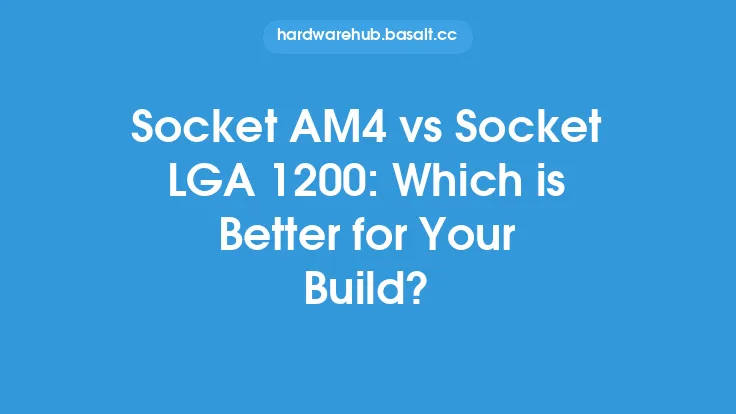When it comes to central processing units (CPUs), one of the key factors that determine their performance is the number of threads they can handle. In this context, threads refer to the individual sequences of instructions that a CPU can execute. There are two primary approaches to handling threads: single-threading and multi-threading. In this article, we will delve into the differences between CPU multi-threading and single-threading, exploring their strengths and weaknesses, and discussing which approach is better suited for specific needs.
Introduction to Single-Threading
Single-threading is a processing approach where a CPU executes one thread at a time. This means that the CPU focuses on a single task, completing it before moving on to the next one. Single-threading is relatively simple to implement, as it doesn't require the complex scheduling and management that multi-threading demands. In single-threaded systems, the CPU can devote all its resources to the current task, potentially leading to faster execution times for that specific task. However, this approach can lead to inefficiencies when dealing with multiple tasks, as the CPU can only handle one task at a time.
Introduction to Multi-Threading
Multi-threading, on the other hand, allows a CPU to execute multiple threads concurrently. This is achieved through a process called context switching, where the CPU rapidly switches between different threads, executing a portion of each thread before moving on to the next one. Multi-threading can significantly improve system responsiveness and throughput, as it enables the CPU to handle multiple tasks simultaneously. This approach is particularly beneficial in scenarios where tasks have periods of idle time, such as waiting for input/output operations to complete. By executing other threads during these idle periods, the CPU can maximize its utilization and increase overall system performance.
Key Differences Between Single-Threading and Multi-Threading
The primary difference between single-threading and multi-threading lies in their approach to task execution. Single-threading focuses on one task at a time, while multi-threading handles multiple tasks concurrently. This fundamental difference has significant implications for system performance, responsiveness, and efficiency. Multi-threading can lead to better system utilization, as the CPU can execute other threads during periods of idle time. In contrast, single-threading can result in underutilization of the CPU, as it waits for the current task to complete before moving on to the next one.
Advantages of Multi-Threading
Multi-threading offers several advantages over single-threading. One of the most significant benefits is improved system responsiveness. By executing multiple threads concurrently, the CPU can respond quickly to user input and other system events, even if one thread is performing a time-consuming task. Multi-threading also enables better system utilization, as the CPU can execute other threads during periods of idle time. This approach can lead to significant performance improvements in scenarios where tasks have varying execution times or require waiting for input/output operations to complete.
Disadvantages of Multi-Threading
While multi-threading offers several advantages, it also has some disadvantages. One of the primary challenges is the increased complexity of thread scheduling and management. As the number of threads increases, the CPU must devote more resources to managing thread execution, which can lead to overhead and decreased performance. Additionally, multi-threading can introduce synchronization issues, where threads access shared resources simultaneously, potentially leading to data corruption or other errors. To mitigate these issues, developers must implement synchronization mechanisms, such as locks or semaphores, which can add complexity to the system.
Choosing Between Single-Threading and Multi-Threading
The choice between single-threading and multi-threading depends on the specific requirements of the system or application. Single-threading is suitable for scenarios where tasks are simple, have minimal idle time, and require low latency. Examples include real-time systems, embedded systems, or applications with strict performance requirements. In contrast, multi-threading is better suited for scenarios where tasks have varying execution times, require waiting for input/output operations to complete, or need to handle multiple tasks concurrently. Examples include desktop applications, server software, or systems with high throughput requirements.
Conclusion
In conclusion, the choice between CPU multi-threading and single-threading depends on the specific needs of the system or application. While single-threading offers simplicity and low latency, multi-threading provides improved system responsiveness, better system utilization, and increased throughput. By understanding the strengths and weaknesses of each approach, developers and system designers can make informed decisions about which threading model to use, ultimately leading to better performance, efficiency, and responsiveness in their systems. As CPU architectures continue to evolve, the importance of multi-threading will only continue to grow, making it an essential aspect of modern computing.





